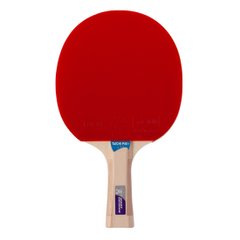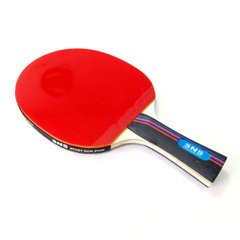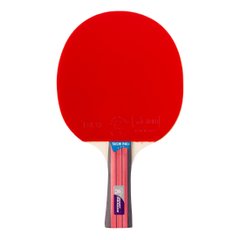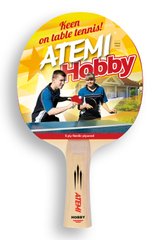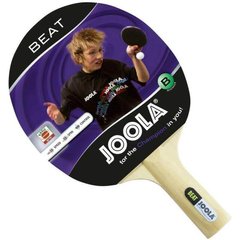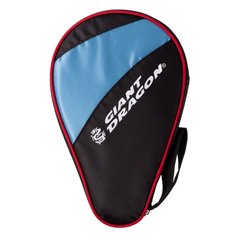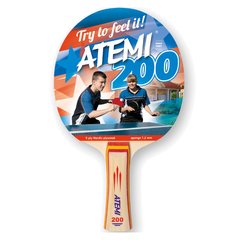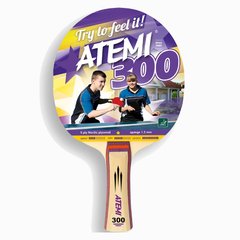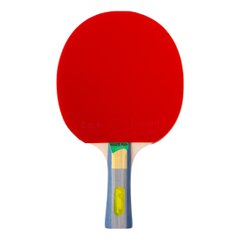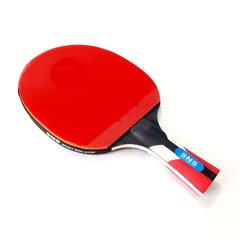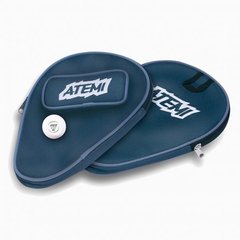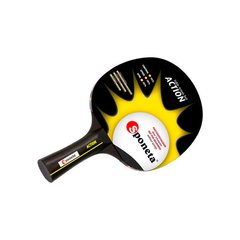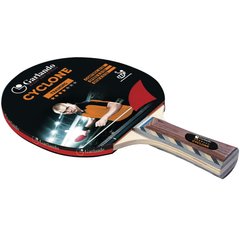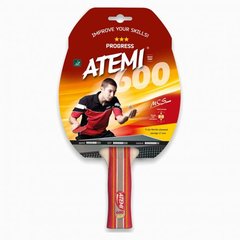|
Quantity
|
Out of stock
|
||
|
|
|||
Table tennis rackets are a key element of the game as they affect ball control, speed and spin during play. Choosing the right racket can make a big difference to a player's style and performance.
The main components of table tennis rackets:
1. Base (Blade):
- Material: Usually the base of the racket is made of wood, but layers of other materials such as carbon or Kevlar can be added to improve performance. Wooden bases usually consist of 5-7 layers.
- Speed: The base determines the speed of the game. Heavier bases provide more power, while lighter ones promote better ball control.
2. Pads (Rubbers):
- Types of overlays:
- Smooth overlays (inverted): The most popular, used to create rotation and ball control.
- Pimpled pads: Used for defensive play or to create special effects such as reducing ball spin.
- Sponge thickness: The sponge between the base and the top layer of the pad can vary in thickness. Thin sponges provide better control, while thick sponges promote more speed and spin.
3. Handle:
- Shape: Handles can be of different shapes — anatomical (anatomical), conical (conic) or straight (straight). The choice depends on the player's preferences and his playing style.
- Material: The handle is usually made of the same wood as the base and may have additional finishes for added comfort.
Types of rackets for different styles of play:
1. Attack rackets:
- These rackets have more speed and are designed for players who prefer an aggressive style of play with powerful shots. They usually have a stiffer base and thicker pads for maximum spin.
2. Rackets for defensive play:
- These rackets have a softer base and thinner pads, which provides better control over the ball and allows for effective defensive shots.
3. Universal rackets:
- Suitable for players who combine attack and defense. These rackets provide a balance between speed, spin and control.
How to choose a racket:
1. Player level:
- For beginners, ready-made rackets with good control are better suited to learn the technique more easily.
- Advanced players can select individual components of the racket to customize it to their playing style.
2. Game style:
- If you prefer a fast attacking game, choose rackets with harder pads and a fast base.
- For defensive play, rackets with softer pads and a base that provide better control are suitable.
3. Budget:
- The price of rackets may vary depending on the materials and brand. It is important to find the optimal balance between price and quality according to your needs.
Racket care:
1. Cleaning of overlays:
- Regularly clean the linings with special means or simply with a damp cloth to preserve their properties.
2. Protection from external influences:
- Use a racket cover to protect it from dust, dirt and mechanical damage.
3. Replacement of overlays:
- Pads have a limited lifespan, so they should be replaced when they lose grip or wear out.
A table tennis racket is an individual tool that should be selected according to your preferences and playing style.
































































































